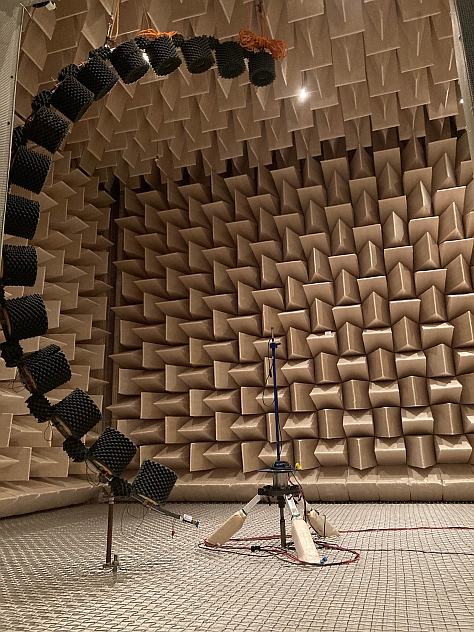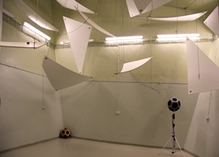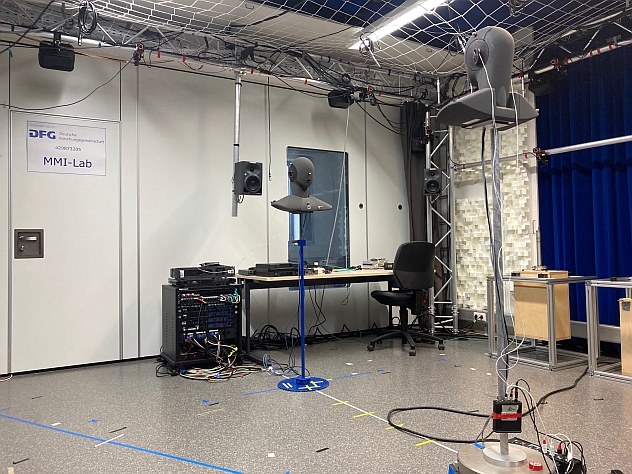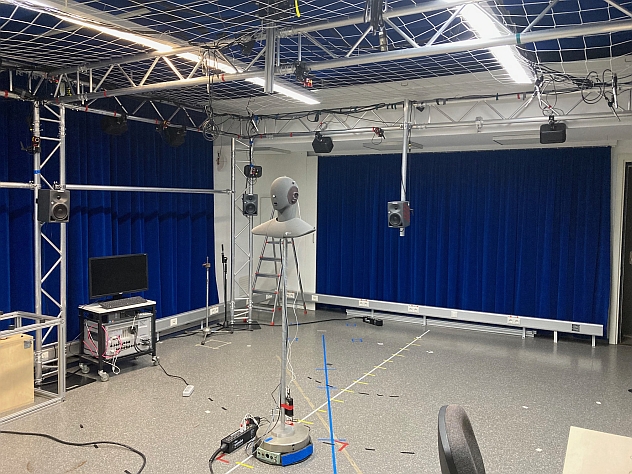Institute of Communication Acoustics
Auditory communication and processing of acoustic signals occupies a dominant position in information science and technology; mobile communications, broadcasting services, hearing aids, and sound reinforcement systems being well known examples of its application areas. Furthermore, acoustic signal processing for man-machine communication is of great importance, e.g. in automatic speech recognition, dictation, and speech dialog systems, and for access control. Current research aims at making several modes of human-machine interaction (auditive, visual, tactile) concurrently available and integrated into novel applications.
The information
technology aspects of communication acoustics rest on four
pillars:
- physical acoustics,
- human perception (e.g. psychoacoustics),
- digital signal processing and
- machine learning
whereby the interactions between
these areas are especially appealing. The Institute of Communication
Acoustics embodies these topics in research and education. Our activities
are channeled into the
following research groups:
- Speech and Audio Signal Processing
- Engineering Models of Auditory Perception
The Institute is equipped with a high speed computer network, workstations and real-time signal processing systems. Furthermore, we possess equipment and rooms for acoustic measurement. A high-performance CPU server and a GPU server (Nvidia DGX-1), as well as large-scale measurement equipment for recording acoustic data (loudspeakers, artificial heads, motion tracking system), were acquired in 2020 with funding from the DFG (project number 429873205). These devices are used regularly for research work at the IKA.





